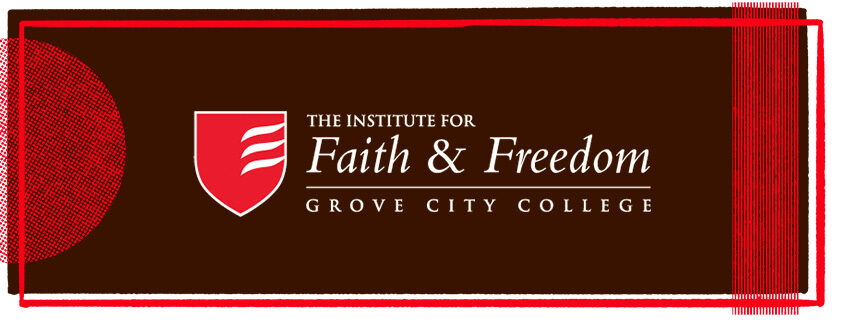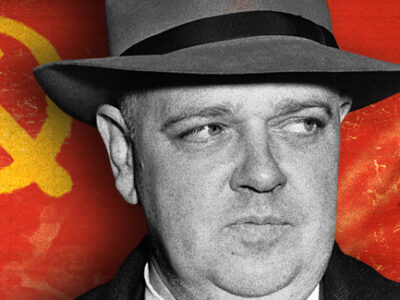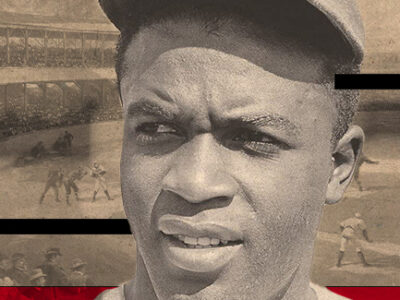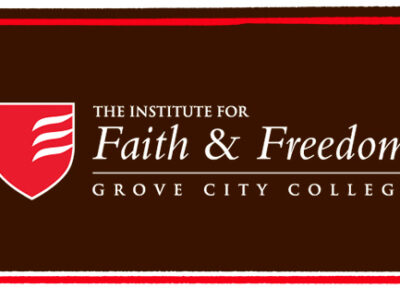
Editor’s note: This article first appeared at The American Spectator.
There were seven. Seven figures above all, with varying influences, some more intentional than others, who brought down the Berlin Wall, freed Eastern Europe from communism, took down the Soviet Union, and peacefully ended the Cold War. They were Ronald Reagan, Pope John Paul II, Margaret Thatcher, Mikhail Gorbachev, Boris Yeltsin, Vaclav Havel, and Lech Walesa.
They’re all gone, except for one: Lech Walesa.
And yet, Walesa could’ve been the first to go, if the communists had their way. They certainly wanted him dead.
From January 15-19, 1981, Lech Walesa, the brave leader of the Polish Solidarity movement, was in Rome. He had a special audience with another anti-communist Pole that the communists badly wanted dead: Pope John Paul II.
Walesa visited with the Polish pontiff the morning of January 19, which just happened to be the eve of Ronald Reagan’s inauguration as president of the United States. He had no idea that communist agents were watching his every move. They knew every detail of his schedule. They had even made note of the color of the paint on the walls of the Hotel Victoria where he was staying. Their ringleader was a hit man working for a Bulgarian spy ring that reported to the Kremlin. His name was Mehmet Ali Agca.
The same Agca who a few months later would try to assassinate the pope.
As careful as Agca and gang had planned things, their plot didn’t pan out, as Agca later noted in testimony to an Italian judge. His minute details were shocking. Some of the details he later recanted, for reasons not difficult to understand. After all, once caught and imprisoned, Agca himself was a wanted man. The Kremlin now wanted him dead. The Soviets had their own plans for Agca, namely, to assassinate the assassin. Dead men can’t testify against their organizers.
Ace reporter Claire Sterling, who wrote the book on the plot to kill Pope John Paul II, did a front-page piece on the Walesa plot for the October 27, 1984 New York Times, titled, “Agca’s Other Story: the Plot to Kill Walesa.” The world by then knew of Agca’s plot to kill Pope John Paul II, but not of the effort against Walesa.
Sterling detailed a scheme between Agca and three Bulgarian accomplices to literally blow-up Walesa. The Bulgarian element itself was revealing: The Soviet bloc state of Bulgaria was a dutiful stooge to the USSR, so much so that it was often referred to as “the sixteenth Soviet republic.” KGB defector Oleg Kalugin described the Bulgarian Interior Ministry as little more than a branch of the KGB.
When the Russkies needed a dirty job done, they tasked their Bulgarian lackeys.
And by mid-January 1981, Mehmet Ali Agca and his cronies were ready for business. They had two cars and a bomb, both primed to go.
“They carried a bomb in a small suitcase,” Agca later explained. “I was supposed to put it in a small Fiat that [Ivan] Dontchev had parked earlier near the taxi stand, then get back in the Peugeot. When Walesa came out, we would set off the bomb by radio and, since we were about 60 yards away, we could drive off tranquilly. The radio looked real, set into the dashboard. A turn of the switch would make the bomb explode.”
For his deadly fireworks display, Agca had been promised 300 million lire, the equivalent of about $300,000, plus quick escort out of Rome and protective sanctuary in Bulgaria.
But it never got that far. How did it fail? It’s hard to say. In fact, Walesa was so fortunate that one wonders if some form of divine protection had been bestowed upon him. That wasn’t out of the realm of possibility.
Upon Walesa’s initial arrival on January 15, he had been greeted by Pope John Paul II at the Vatican’s Consistory Hall, a beautifully sacred place replete with frescoes on the walls and gilded ceiling. The Polish union worker was accorded the reception of a visiting head of state. He joined the Polish pontiff, journalists, and fellow unionists in singing the patriotic hymn, “God Save Poland.”
On his last morning in Rome, Walesa and his delegation went to Mass with John Paul II in his private chapel. “I want to gather around this altar all working men, and all that their lives contain,” said the Holy Father. The future saint placed on the altar “all Polish labor.”
Perhaps this was the shield that protected Walesa that January 1981. The attempt on his life failed.
The Soviets surely were not happy. Nonetheless, Agca and his cabal got an opportunity to redeem themselves in the eyes of their bosses five months later on May 13, 1981 — the Feast Day of Our Lady of Fatima. On that occasion, the Polish figure in the crosshairs was an even more sensational target. He was the leader of the world’s largest group of Christians.
On that day, Agca, working with his Bulgarian buddies outside the Vatican, came extraordinarily close to killing their target. At 5:13 p.m. at St. Peter’s Square, Agca pulled from his jacket a 9-mm semiautomatic Browning and planted two bullets in Pope John Paul II. The pope went down, and very nearly bled to death. He credited his unlikely survival to a divine hand that deflected the bullet just enough.
Pope John Paul II lived on. He survived — to become one of those Cold War heroes who defeated Soviet communism.
But that’s another story.
As for Lech Walesa, he is now 80 years old. And for the first time, I had a chance to ask him directly about that assassination attempt in January 1981.
This past Friday afternoon, February 9, Walesa spoke to a small audience at the Victims of Communism Memorial Museum in Washington, DC.
The 80-year-old Walesa walked into the room almost unnoticeably. In a room of suits, he appeared every bit the blue-collar labor leader, the electrician from the Lenin Shipyard in Gdansk. He wore a denim-colored shirt, a workman’s shirt, which on the right breast had a patch of Poland’s Black Madonna and on the left a pin of the Ukrainian flag. He had dark-rimmed glasses, was short and stocky, and looked good for his age. He was energetic, speaking and answering questions enthusiastically for an hour.
Walesa was introduced by Ambassador Andrew Bremberg, president of the Victims of Communism Memorial Foundation, and interviewed by moderator Elizabeth Spalding, chair of the foundation and founding director of the Victims of Communism Museum. Dr. Spalding’s introduction nicely captured Walesa’s unique contribution: “He led Poland’s victory against the deadliest ideology the world has ever seen.”
Walesa talked about Poland, Ukraine, Russia, the “old order” and “new order,” about America’s global commitments, about Putin’s thuggery, about Russia as (in his view) a world menace, about his beloved Poland’s “unfortunate historical geographic location” between Germany and Russia. He quipped that Germans and Russians in the past entered Poland as “tourists, who like to visit one another, and in times past, before technology, they had to walk through Poland…. We had to learn how to evict them.”
Walesa spoke of the advent of Karol Wojtyla becoming pope in October 1978, the first Slavic pope ever, after 455 years of Italian popes. “The Polish people prayed and prayed until there was a Polish pope,” said Walesa. And the communists did anything but pray. They dreaded a Polish pope. Walesa remarked on the communist church watchers who spied inside parishes. They were easy to figure out, given they didn’t even know how to make the Sign of the Cross. Walesa gestured: “They would count: 1, 2, 3, 4, 5. And we said, ‘what the hell are they doing?’” But Walesa believes that attending Mass did them some good: “We learned they were like radishes — red only on the outside.” Even these militant Marxist-Leninists were struck by “the inspirational words of the pope.”
With the work of the Polish pope in Rome and the Solidarity movement in Poland, communism’s days were numbered. “We could see how communism had become devoid of meaning,” said Walesa. “Their tactics didn’t fit reality…. I knew as a practitioner that communism was ending. The only question was how to accelerate it.” He said that “communism looked in Poland like a horse saddle on a pig, and we had to carry that saddle for 50 years.… So, we knew it was ending but the key was how to end it peacefully.”
Walesa politely answered questions from the audience — about the Western alliance, Ukraine, and Vladimir Putin’s hideously stupid comments to Tucker Carlson about Poland allegedly teaming up with Hitler to start World War II (it was Stalin and the Soviets who had done that with their August 1939 Hitler-Stalin Pact). Time was up, but the gracious Dr. Spalding saw my hand in the back of the room and called on me for the final question. I couldn’t resist; I had to go back to 1981. I figured we should finish with some fireworks.
I asked: “President Walesa, speaking of victims of communism, on May 13, 1981, another victim of communism was a Polish pope named John Paul II. They nearly killed him. A few months before that, in January 1981, they tried to kill you. Mehmet Agca, the pope’s would-be assassin, said that he and his accomplices also tried to kill you. Any comment?”
There was uneasy commotion in the room, as I paused after each sentence to ensure the translator got each line to Walesa. The labor leader didn’t flinch, answering with a stoic smile: “Ladies and gentlemen, there have been five documented attempts on my life. But I have connections from above. I know some saints.”
One of those saints was Pope John Paul II. Another was the Lady of Czestochowa, the Black Madonna on Walesa’s right breast. Another — on his way to canonization — was the martyred chaplain of the Solidarity movement, Fr. Jerzy Popieluszko. Walesa didn’t name names, but those are a few he wouldn’t dispute.
“I managed to get out [alive],” continued Walesa. “Some of the things that happened to me are incredible, but I managed to get out. The finger of God was upon me.” His pope had felt the same.
The simple union-leader-turned-president — ultimately the first freely elected president of post-communist Poland — ended with a quip: “I always feared God … and a little bit my wife also.”
The audience laughed. I gave Walesa a smile and thumbs up from the back of the room, as his security guy gave me an unsettled look.
We could all laugh, because, yes, Lech Walesa had gotten out alive that day in January 1981. So had Pope John Paul II four months later. And in fact, so had Ronald Reagan — who between those two assassination attempts had survived an assassin’s handgun in Washington on March 30, 1981. And you may not know that Margaret Thatcher survived an explosion in October 1984 that had likewise been intended to kill her, too.
All those attempts failed. And in the end, those figures of the Cold War survived to become heroes of the Cold War, while communism — history’s deadliest failure — died in Eastern Europe and its grotesque Evil Empire collapsed.
Kudos to Lech Walesa, the one Cold War hero who remains with us still.




